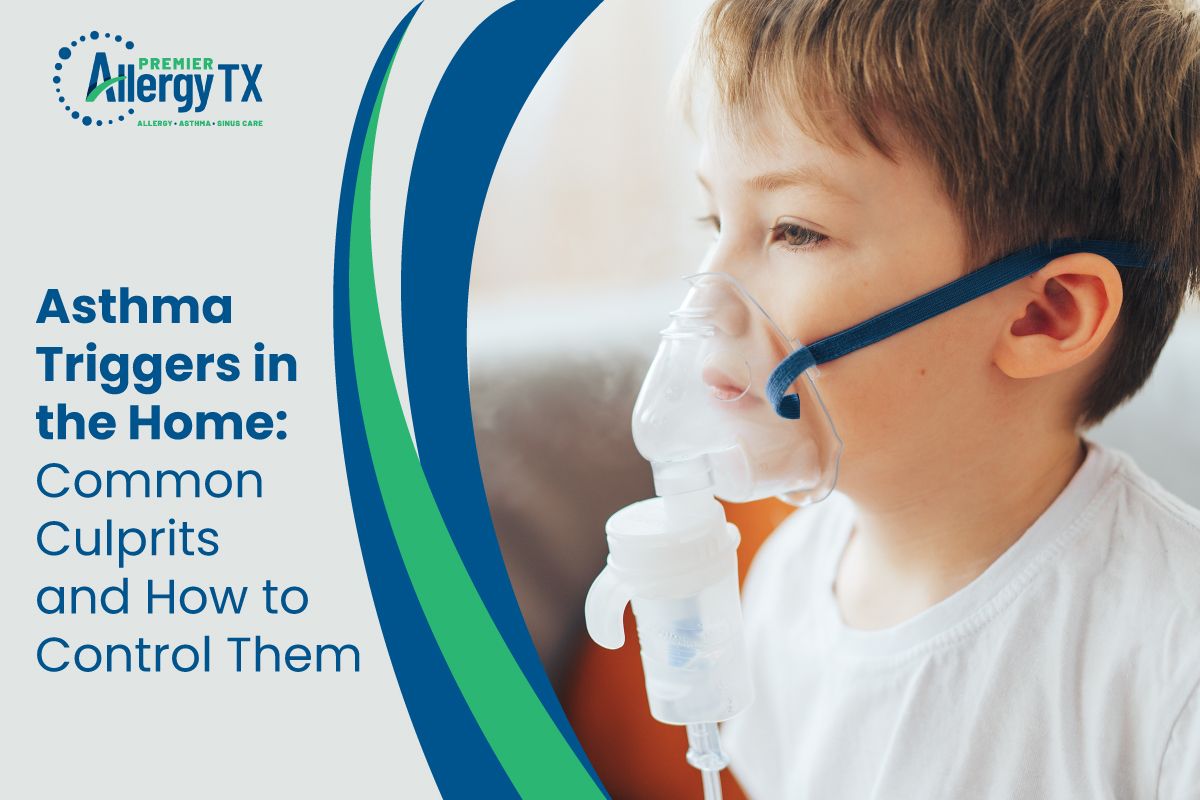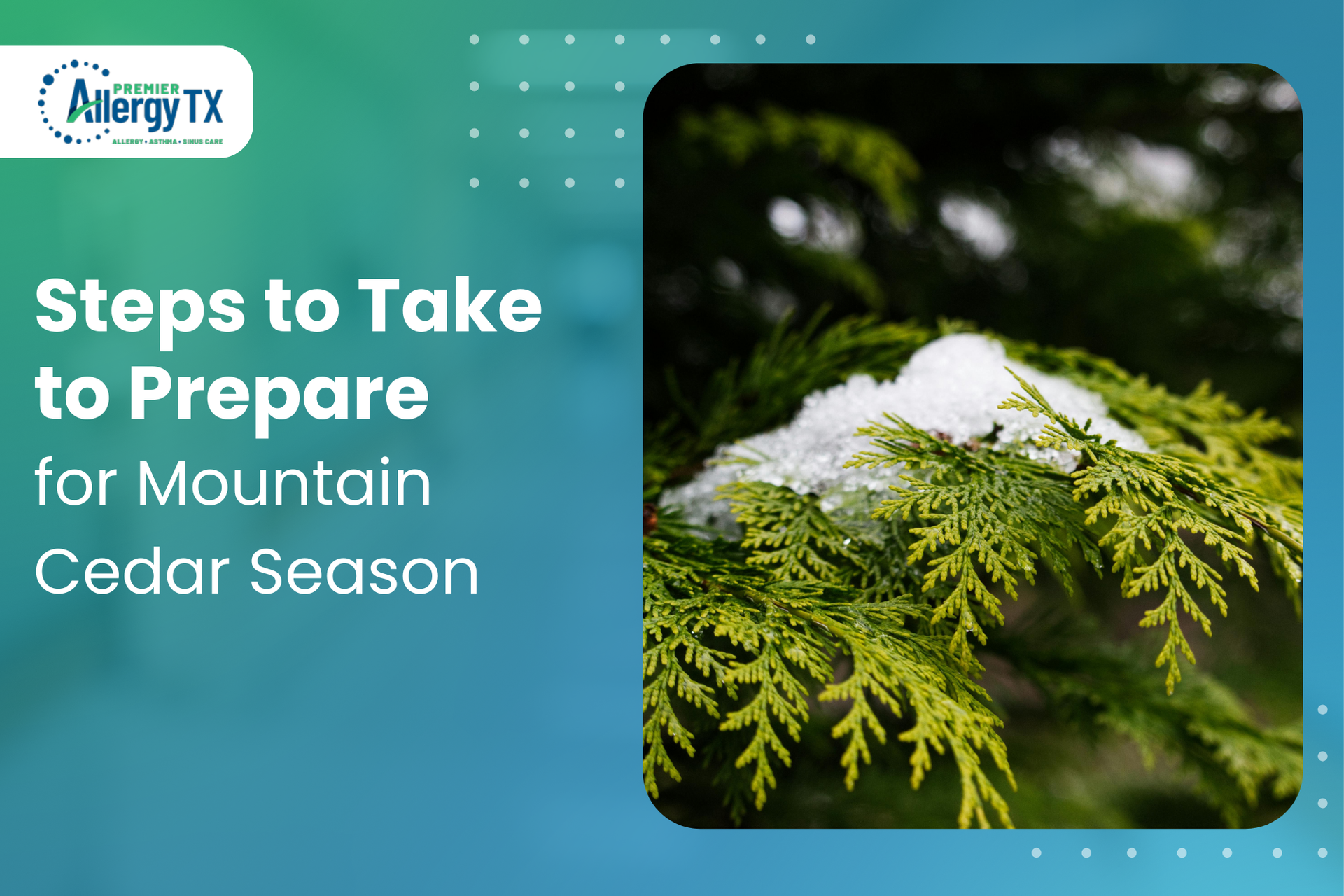Millions of individuals worldwide have asthma, a chronic respiratory illness. It is characterized by airway inflammation and constriction, which causes coughing, wheezing, and breathlessness. While there is no cure for asthma, managing the condition involves identifying and avoiding triggers that can worsen symptoms. This blog will discuss common asthma triggers in the home and tips on how to make your home asthma-friendly.
According to a
report by the Centers for Disease Control and Prevention, in 2008, over 1.2 million adults in Texas had asthma, with a lifetime prevalence of 12.2% and a current prevalence of 7.3%. Additionally, an estimated 590,563 children in Texas had asthma, with a lifetime prevalence of 14.1% and a current prevalence of 9.2%. These rates are comparable to the national rates, with Texas slightly lower in adult prevalence but somewhat higher in child prevalence.
Common Asthma Triggers in the Home
For people living with asthma, identifying and avoiding triggers that can cause symptoms is essential for managing their condition. While triggers can vary from person to person, certain factors can affect many people with asthma. In this blog section, we’ll explore common asthma triggers in the home and provide tips to asthma-proof your home.
Dust and Dust Mites
Dust and asthma are often correlated, as dust is a common allergen that can
trigger asthma symptoms.
Dust mites
are tiny creatures that eat dead skin cells and flourish in warm, humid settings. They can be found in bedding, carpets, upholstered furniture, and curtains. To reduce dust in your home, wash bedding weekly in hot water, use hypoallergenic pillowcases and mattress covers, and vacuum carpets and upholstery regularly.
Pet Dander
Although many individuals find delight in their pets, asthma symptoms can sometimes be brought on by pets.
Pet dander made up of tiny dots of skin, fur, or feathers, can cause allergic reactions in some people. If you have pets, keep them out of your bedroom and vacuum your carpets and upholstery regularly. Consider using an air purifier to remove pet dander from the air.
Mold and Mildew
Mold and mildew are common allergens that can grow in damp areas of your home
, such as bathrooms, basements, and kitchens. They release spores that can trigger asthma symptoms. To prevent mold and mildew growth, promptly fix any leaks or water damage, use a dehumidifier to reduce moisture levels, and regularly clean and disinfect surfaces.
Household Cleaners and Chemicals
Many household cleaners and chemicals
contain volatile organic compounds (VOCs)
that can irritate the lungs and trigger asthma symptoms. To minimize exposure to these chemicals, choose natural, non-toxic cleaning products, open windows when using cleaners, and store chemicals in a well-ventilated area.
Tobacco Smoke
Tobacco smoke is a
potent asthma trigger that can worsen symptoms and lead to asthma attacks. What you should do to improve your health and the health of those around you if you smoke is to stop. If you live with a smoker, encourage them to stop or smoke outside, away from the house.
How to Asthma-Proof Your Home
Creating an asthma-friendly home
is crucial for people living with asthma. By reducing or eliminating common asthma triggers, you can manage your symptoms and improve your overall quality of life.
Asthma carpets and rugs are a breeding ground for dust mites, pet dander, and other allergens. Hardwood, tile, or laminate flooring is easier to clean and less likely to trap allergens. If you cannot remove your carpet, vacuum it regularly with a HEPA filter vacuum cleaner
.
Humidity levels
above 50% can encourage the growth of mold and mildew. Use a dehumidifier to maintain humidity levels between 30% and 50%. You can also use an air conditioner to reduce humidity levels in the summer.
- Use Dust-Proof Covers on Bedding
Dust-proof covers can help prevent dust mites from getting into your bedding. These covers are made of a tightly woven fabric that prevents allergens from getting in or out. Regularly washing your bedding in hot water can eliminate any potential dust mite infestation.
Over time, dust and other allergens can jam up air ducts. Get rid of any accumulation of allergies, and get a professional to clean your air ducts.
- Use Natural Cleaning Products
Natural cleaning products are less likely to contain harsh chemicals that can trigger asthma symptoms. You can make cleaning products using simple ingredients like vinegar, baking soda, and lemon juice. These ingredients are effective at removing dirt and grime without irritating the lungs.
- Keep Your Home Smoke-Free
Tobacco smoke is a potent asthma trigger that can worsen symptoms and lead to asthma attacks. Giving up smoking is the most beneficial action you can take for your health and those nearby. If you cohabit with someone who smokes, advise them to quit or indulge in smoking activities outside of the house, away from others.
People with asthma can breathe more quickly because of an air purifier’s ability to eliminate allergens and other irritants. To capture tiny particles like pollen, pet dander, and dust mites, look for an air purifier with a HEPA filter.
Home Remedies for Asthma
In addition to making your home asthma-friendly, several home remedies can help manage asthma symptoms. Here are a few to try:
Steam Inhalation
Steam inhalation can help open the airways and make breathing easier. Fill a basin with hot water, and then breathe in the steam for several minutes. Including a few drops of essential oils like peppermint or eucalyptus may also improve the benefits of the water.
Ginger
Natural anti-inflammatory ginger can aid in reducing airway inflammation. You can add ginger to your diet by drinking ginger tea or adding fresh ginger to your meals. In a
study, ginger extract can potentially manage and alleviate the severity of asthma by affecting the critical cells that contribute to its symptoms.
Honey
Honey is a natural cough suppressant to help soothe a sore throat and reduce coughing. Add a teaspoon of honey to your tea, or eat it straight from the spoon. According to a study
, honey in combination with
Nigella sativa
(also known as black seed) was the most popular and deemed significant changes and improvements in all aspects of asthma.
A Breath of Fresh Air: Minimizing Household Asthma Triggers
Millions of individuals throughout the world have asthma, a chronic respiratory illness. Managing asthma involves identifying and avoiding triggers that can worsen symptoms. Allergy-proof your home by controlling your living space and keeping common asthma triggers at bay. By implementing simple steps such as removing carpets, using natural cleaning products, and encouraging smokers to smoke outside, you can minimize the presence of household asthma triggers and breathe easier. Protect your health and loved ones by creating a safe and allergy-proof home.
Are you struggling to manage your asthma triggers at home? Look no further than Premier Allergy, TX. Our certified allergy and immunology specialist, Dr. John F. Freiler, is dedicated to providing comprehensive asthma treatment and helping patients identify workable solutions to manage their symptoms. Our asthma specialist doctor specializes in treating asthma and allergies and can help answer any questions about the connection between the two. Don’t let asthma control your life. Take the first step towards relief by calling us at
(210) 791-7856
or visiting
Premier Allergy TX to learn how we can help you breathe easier in your home.















